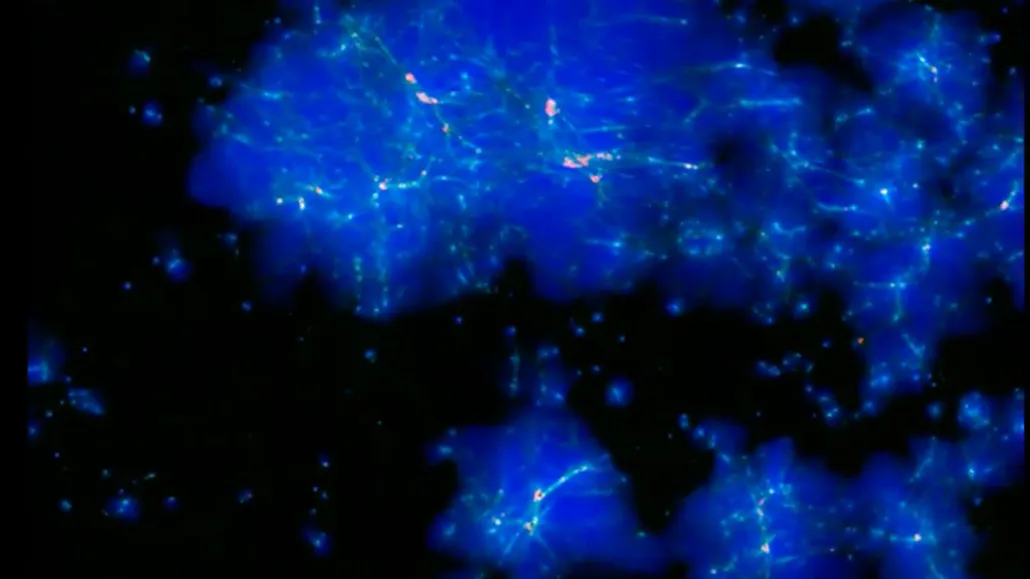
Radiation (blue) emanates from dense filaments of stars and galaxies (white) in this snapshot from a new simulation of the early universe.
P. Ocvirk/Observatoire astronomique de Strasbourg, Paul Shapiro/The University of Texas at Austin, The Cosmic Dawn & CLUES Collaborations, Summit/Oak Ridge Leadership Computing Facility